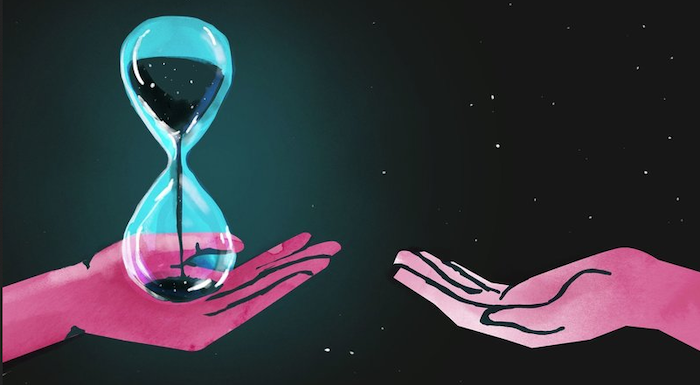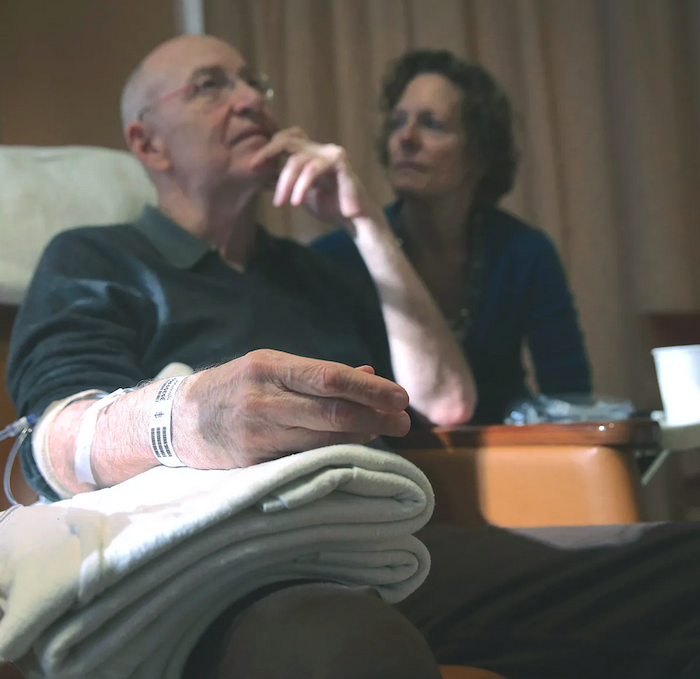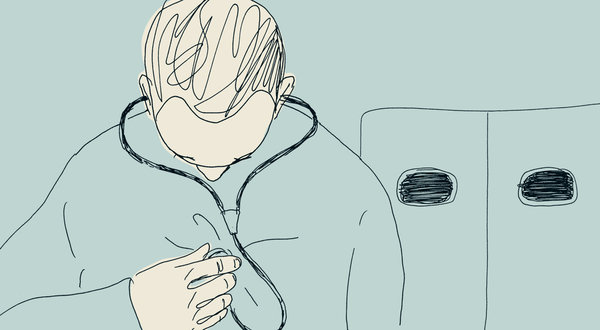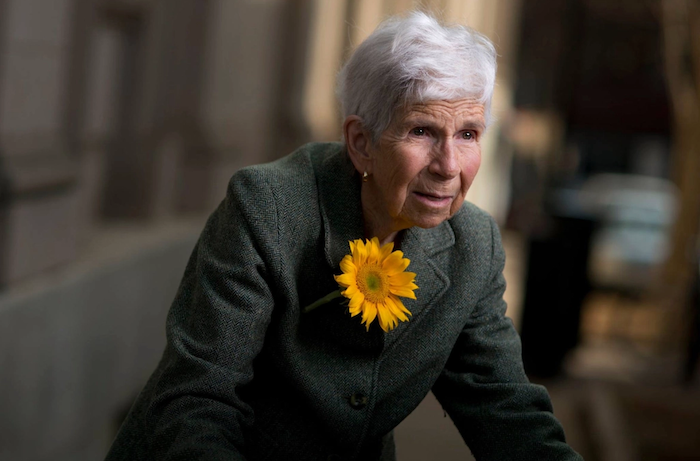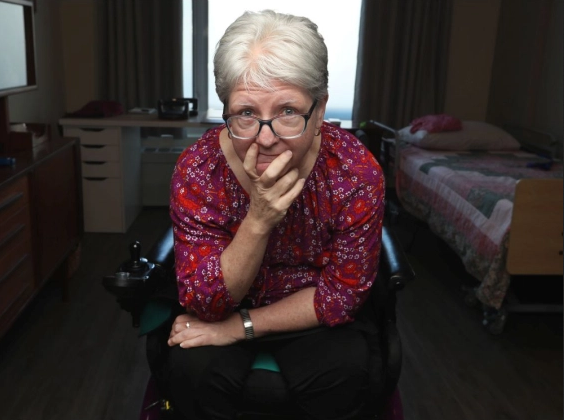
By Kelly Egan
One day last week, Lynn Kennedy finally got the medical news that would end her chronic pain and stop the many-sided suffering she has endured for nearly 10 years.
Doctors agreed to help her die.
Kennedy, 58, had been trying for months to have a medically assisted death and went public with her wishes in February to draw attention to a major barrier in Canada’s regulations.
Applicants could only be approved if their death was “reasonably foreseeable” and, at the time, hers was not, leaving her to cope with years, possibly decades, of declining physical and mental health.
“I’m not me anymore,” was the devastating way she expressed her station in life.
Kennedy, a former administrator with the Ottawa Police Services Board, had been battling a condition called transverse myelitis, a disorder caused by inflammation of the spinal cord and one that can mimic the symptoms of multiple sclerosis.Over a decade, her mobility was gradually reduced to the point that she went from using a cane to an electric wheelchair. She was unable to get out of bed or get to the washroom and, in 2019, moved to a retirement home where she needed support for daily living.
A severe gastro-intestinal blockage landed her in hospital in May. An attempt to give her liquid medicine via a “nasty and uncomfortable” feeding tube earlier this month did not go well, as she has a strong gag reflex.
“That lasted about a day,” she said in an interview from her fifth-floor bed at The Ottawa Hospital’s Civic campus. “I just started screaming, ‘I’m done, I’m done, get it out, I’m done.’”
Because the consensus from two doctors was that the upper-tract blockage — left untreated — would bring about her death in fairly short order, her MAiD, or medically assisted death application, was approved.
Kennedy died in hospital Tuesday, but not before reinforcing her message about the program’s shortcomings.
“I shouldn’t have to wait for someone that I don’t know, didn’t know, and never met, to decide my fate,” she said in a final interview.
“Let it be the patient’s choice. Don’t let a stranger decide.”
Though she worries for her daughter Courtney, 37, and two grandchildren, Kennedy said her strongest reaction to being approved was relief.
“When I heard I was accepted, it was a big sigh and I thanked (the doctor).”
*
Two hours after, Courtney called with the news, pulled over by the side of the road. Her mother went peacefully, in a matter of minutes, before the clock struck noon.
“I’m relieved for her. We had a great last couple of days together and even better final moments.” Lynn’s older sister Gail was also present. That morning, medical staff came by, saying they had learned a good deal about her rare condition, MAiD and the force of one patient’s courage.
The night before, Kennedy received some welcome news. A genetic researcher in the United States said he would be anxious to have spinal cord samples from her, to better study transverse myelitis and help develop treatment options.
It was the first time, Courtney was told, that such a sample would be received by Harvard University’s medical school.“It was a really, really great thing for mom to hear. She always wanted to help somebody or help with something when she went.”Her eyes were also donated. Her mother’s determination to control her own outcome never wavered, Courtney added.
“She absolutely, 100 per cent had no regrets,” she said. “We both said the most perfect things to each other right at the end.”
Among the last things her mother said was “thank you.”
*
Kennedy spoke of the long stretches she has spent in hospital during the last several years, each stay leaving her a little more diminished, the 30 pills she took daily, the loss of independence, the reliance on a call button for basic needs.
“Every time I go in the hospital, I lose something. Every time, and that goes back four years,” she said.After first applying in December, she met all of the MAiD requirements except for the “foreseeable” clause and initially even had a date picked out — Feb. 8 — when her request was denied.

Kennedy went public with her concerns in a story by this newspaper at a time when the federal government was — and still is — proposing changes to the Criminal Code provisions that permit medically assisted death in this country.The revisions were needed after a Quebec Superior Court ruled the “reasonably foreseeable” requirement was a violation of a person’s constitutional rights. The court ordered Parliament to amend the law by July 11.
A spokesman for the Justice department said the COVID-19 pandemic has made it impossible for legislators to meet the deadline and an extension to Dec. 18 has been sought in a court motion. More than 6,700 Canadians have had a medically assisted death since the law came into effect in 2016.Among many changes, the “reasonably foreseeable” section of the law is being rewritten to give patients more control of the timing. The issue of “advanced consent” is also being addressed, in cases where individuals lose mental capacity in the course of their illness.Kennedy, a single mother who admitted to feelings of “cold heartedness” in this seven-month process, said she was not afraid of dying.
“No. Nobody knows where we’re going.”She spent her final days in the company of her daughter and sister and, even in her final hours, never lost her sense of humour. (The food at the General campus, she said, was “gross,” and of her iron-resolve to have an assisted death, she said: “I made two doctors cry today.” No mention, meanwhile, of the grizzled scribbler, wiping something from his eye.)“I’ve been isolating myself for the last year and a half,” she said of tidying up loose ends. “I’m quite content.”We do not doubt her on that point. She had, after all, the final say.
Complete Article ↪HERE↩!

